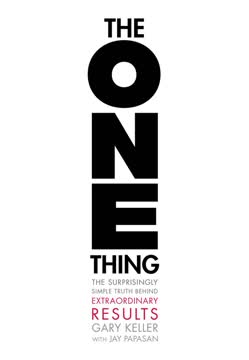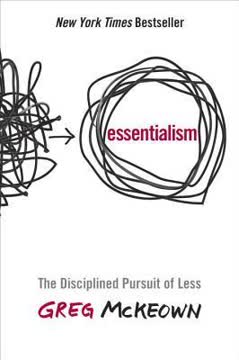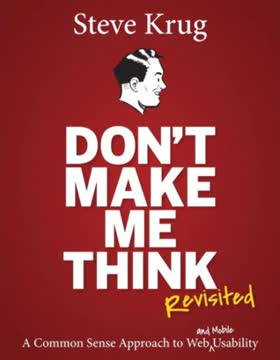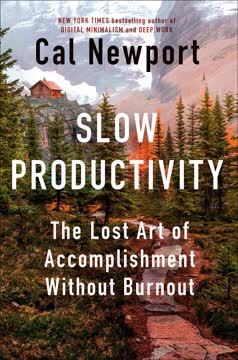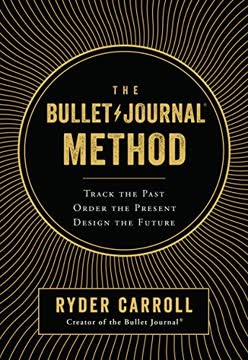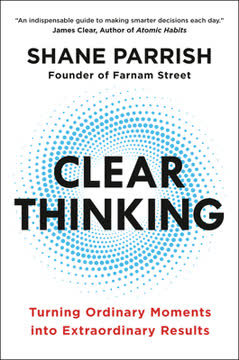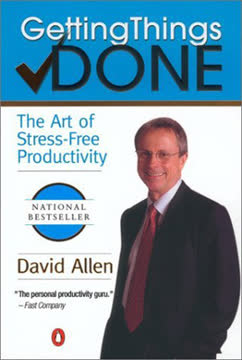النقاط الرئيسية
1. دوّن كل ما يشغل بالك
عقلك مخصص لتوليد الأفكار، لا لحفظها.
اجمع كل المدخلات. قم بتجميع كل مهمة، فكرة، أو التزام يخطر ببالك في نظام خارجي موثوق. يشمل ذلك الأمور العملية والشخصية، من المشاريع الكبرى إلى المهمات الصغيرة. استخدم صواني ورقية، دفاتر ملاحظات، أو تطبيقات رقمية على هاتفك لتسجيل هذه المدخلات فور حدوثها.
كوّن عادة التسجيل. اجعل من عادة كتابة أو تسجيل كل ما يلفت انتباهك فورًا. هذا يحرر مساحة ذهنية ويضمن ألا يفوتك شيء. احتفظ بأدوات التسجيل في متناول يدك في كل مكان – على مكتبك، في حقيبتك، وعلى أجهزتك.
- أدوات التسجيل الورقية: صينية استقبال، دفتر ملاحظات، بطاقات فهرسة
- أدوات التسجيل الرقمية: تطبيق الملاحظات، تسجيلات صوتية، إرسال بريد إلكتروني لنفسك
- أماكن التسجيل: العمل، المنزل، أثناء التنقل
2. وضّح معنى كل عنصر وما يجب فعله بشأنه
التوضيح، وإفراغ صندوق الوارد، لا يعني تنفيذ كل شيء، بل يعني فقط تحديد ماهية كل عنصر وأين يجب أن يذهب.
عالج مدخلاتك. راجع بانتظام العناصر التي سجلتها وقرر ما يعنيه كل منها وما الإجراء المطلوب إن وجد. هذه الخطوة تحول الأفكار الغامضة إلى إجراءات محددة أو مواد مرجعية منظمة.
استخدم عملية التوضيح. لكل عنصر اسأل نفسك:
- ما هو؟
- هل يمكن اتخاذ إجراء بشأنه؟
- إذا نعم، ما هو الإجراء التالي؟
- إذا لا، هل هو مهمل، مرجعي، أم فكرة تحتاج إلى تأجيل؟
هذه الطريقة المنهجية تضمن تصنيف كل عنصر بشكل صحيح وعدم ترك أي شيء في حالة غموض.
3. نظم مهامك في نظام موثوق
التنظيم يعني ببساطة أن مكان الشيء يتوافق مع معناه بالنسبة لك.
أنشئ فئات واضحة. قم بإنشاء قوائم ومجلدات مميزة لأنواع مختلفة من العناصر:
- الإجراءات التالية: مهام فورية بخطوة واحدة
- المشاريع: نتائج متعددة الخطوات
- في الانتظار: مهام تم تفويضها للآخرين
- يومًا ما/ربما: أفكار للمستقبل
- مرجع: معلومات غير قابلة للإجراء
استخدم الأدوات المناسبة. اختر أدوات تنظيم تناسبك، سواء كانت رقمية أو ورقية. المفتاح هو الثبات وسهولة الاستخدام. تجنب الأنظمة المعقدة التي يصعب عليك الاستمرار بها.
- الخيارات الرقمية: تطبيقات إدارة المهام، برامج تدوين الملاحظات
- الخيارات الورقية: مخطط ورقي، مجلدات ملفات، بطاقات فهرسة
- النهج المختلط: دمج الأنظمة الرقمية والورقية حسب الحاجة
4. راجع التزاماتك بانتظام
افعل شيئًا بما تفكر فيه، وفكر فيما تفعله.
راجع نظامك. قم بتقييم قوائمك، مشاريعك، وتقويمك بانتظام للتأكد من تحديثها ومواءمتها مع أولوياتك الحالية. هذه المراجعة تحافظ على سيطرتك ووعيك بالتزاماتك.
نفذ روتين مراجعة. خصص وقتًا للمراجعات اليومية، الأسبوعية، والدورية:
- يوميًا: مسح سريع للتقويم والإجراءات الحرجة
- أسبوعيًا: مراجعة شاملة لكل القوائم والمشاريع
- شهريًا/ربع سنوي: مراجعة على مستوى أعلى للأهداف والمشاريع طويلة الأمد
تساعدك هذه المراجعات على البقاء متحكمًا في التزاماتك وإجراء التعديلات اللازمة.
5. تعامل مع مهامك بثقة
افعل، أو لا تفعل. لا يوجد محاولة.
ثق في نظامك. بعد أن تسجل، توضح، وتنظم التزاماتك، يمكنك التعامل مع مهامك بثقة. يتيح لك نظامك الخارجي التركيز على المهمة الحالية دون القلق من نسيان التزامات أخرى.
اختر المهام حسب السياق. حدد الإجراءات التالية بناءً على:
- السياق (المكان، الأدوات المتاحة)
- الوقت المتوفر
- مستوى الطاقة
- الأولوية
هذا النهج المرن يمكنك من الإنتاجية في مختلف الظروف، مستفيدًا بأفضل شكل من وقتك ومواردك.
6. أنشئ قائمة مشاريع لتتبع النتائج متعددة الخطوات
لدى البعض قوائم بالأهداف الكبيرة والرؤى، ولدى كثيرين قوائم بالمهام البسيطة. قليلون فقط لديهم قائمة بكل النتائج الوسيطة (أي "المشاريع")، وهذه القائمة ضرورية للبقاء مركزًا على الأمور الصحيحة أسبوعًا بعد أسبوع.
حدد المشاريع بوضوح. المشروع هو أي نتيجة تتطلب أكثر من خطوة واحدة. احتفظ بقائمة شاملة لكل مشاريعك الحالية، الشخصية والمهنية.
راجع وحدث بانتظام. تأكد من أن كل مشروع يحتوي على:
- نتيجة واضحة وقابلة للتنفيذ
- خطوة تالية واحدة على الأقل محددة
- مراجعة منتظمة للحفاظ على التقدم
هذا الأسلوب يمنع تعثر المشاريع ويبقيك على اطلاع بكل التزاماتك.
7. قم بمراجعة أسبوعية للبقاء على اطلاع بنظامك
المراجعة الأسبوعية هي أهم خطوة لممارسة منهج GTD باستمرار. إذا قمت بها، سيظل نظامك حيًا وينمو ليصبح أكثر نضجًا ومعنى. وإذا لم تفعل، ستتراجع ممارستك وتختفي في النهاية.
حدد وقتًا مخصصًا للمراجعة. خصص من 30 إلى 90 دقيقة أسبوعيًا لمراجعة شاملة لنظامك. اختر وقتًا ومكانًا ثابتين لجعلها عادة.
اتبع عملية منظمة:
- التوضيح: جمع الأوراق المتناثرة، معالجة صناديق الوارد، إفراغ ذهنك
- التحديث: مراجعة الإجراءات التالية، التقويم، المشاريع، والعناصر في الانتظار
- الإبداع: مراجعة قائمة يومًا ما/ربما، وتوليد أفكار جديدة
هذه العادة الأسبوعية تضمن بقاء نظامك محدثًا وموثوقًا.
8. استخدم قاعدة الدقيقتين للمهام السريعة
إذا كان بالإمكان إنجاز إجراء في دقيقتين أو أقل، فافعله الآن.
تعامل مع المهام الصغيرة فورًا. عند معالجة مدخلاتك، إذا استغرق الإجراء أقل من دقيقتين، قم به فورًا بدلاً من تأجيله. هذا يمنع تراكم المهام الصغيرة ويعطل نظامك.
أمثلة على مهام الدقيقتين:
- الرد على بريد إلكتروني سريع
- إجراء مكالمة هاتفية قصيرة
- أرشفة مستند
- إضافة عنصر إلى قائمة التسوق
هذه القاعدة تزيد من كفاءتك العامة من خلال إنجاز المهام الصغيرة بسرعة.
9. احترم تقويمك للالتزامات ذات الوقت المحدد
اعتبر تقويمك "المنظر الصلب" ليومك، الأشياء التي يجب إنجازها في يوم معين، مثل الاجتماعات، المواعيد النهائية، والفعاليات المحددة – الأشياء التي يجب القيام بها، لا التي ترغب في محاولة القيام بها.
احتفظ بالتقويم للالتزامات الزمنية الحقيقية. استخدم تقويمك فقط لـ:
- المواعيد والاجتماعات
- المواعيد النهائية المحددة باليوم
- المعلومات الحساسة للوقت
تجنب وضع المهام العادية أو الأفكار الطموحة على التقويم. هذا يحافظ على مصداقيته كأداة موثوقة للالتزامات الزمنية.
استخدم قوائم أخرى للمهام غير المرتبطة بالوقت. احتفظ بالإجراءات التالية والمهام المتعلقة بالمشاريع في قوائم منفصلة، وليس على التقويم. هذا يسمح بمرونة أكبر في عملك اليومي.
10. افرغ صينية الاستقبال وصندوق البريد بانتظام
إذا لم تولِ اهتمامًا لما يشغل بالك، فسوف يستحوذ على انتباهك أكثر مما يستحق.
اعمل على إفراغها بانتظام. حاول إفراغ صينية الاستقبال البريدية والإلكترونية يوميًا أو كل بضعة أيام. هذا يمنع تراكم الأعمال ويضمن وعيك الدائم بمدخلاتك الحالية.
اتبع عملية التوضيح لكل عنصر:
- حدد ماهيته وما يجب فعله
- نفذ إجراءً فوريًا، فوّض، أو أجل حسب الحاجة
- أرشِف المواد المرجعية
- احذف أو أرشِف العناصر المكتملة
المعالجة المنتظمة تحافظ على تدفق نظامك وتمنع الشعور بالإرهاق الناتج عن تراكم المدخلات.
آخر تحديث::
FAQ
What's "The Getting Things Done Workbook" about?
- Overview: "The Getting Things Done Workbook" by David Allen and Brandon Hall is a practical guide designed to help individuals achieve stress-free productivity through a series of structured exercises.
- Purpose: It serves as a supplement to Allen's original "Getting Things Done" book, focusing on actionable steps to implement the GTD methodology.
- Structure: The workbook is organized into ten moves, each aimed at enhancing personal and organizational productivity by managing tasks, projects, and commitments effectively.
- Authors' Expertise: David Allen is renowned for his expertise in productivity, while Brandon Hall brings experience in coaching and high achievement strategies.
Why should I read "The Getting Things Done Workbook"?
- Practical Application: The workbook provides hands-on exercises that help you apply the GTD methodology in real-life scenarios, making it easier to adopt and maintain.
- Stress Reduction: By following the workbook's steps, you can achieve a state of stress-free productivity, allowing you to focus on what truly matters.
- Improved Organization: It offers a structured approach to organizing tasks, projects, and commitments, leading to better time management and efficiency.
- Expert Guidance: With insights from productivity expert David Allen, the workbook is a reliable resource for anyone looking to enhance their productivity skills.
What are the key takeaways of "The Getting Things Done Workbook"?
- Five Steps of GTD: The workbook emphasizes the five steps of the GTD methodology: Capture, Clarify, Organize, Reflect, and Engage.
- Ten Moves: It breaks down the GTD process into ten actionable moves, each designed to help you implement the methodology effectively.
- Mind Like Water: Achieving a "Mind Like Water" state is a key goal, where your mind is clear and focused, allowing for optimal productivity.
- Regular Reviews: The importance of weekly and daily reviews is highlighted to maintain control over tasks and commitments.
How does the GTD methodology work in "The Getting Things Done Workbook"?
- Capture: Collect all tasks, ideas, and commitments in a trusted system to ensure nothing is forgotten.
- Clarify: Process each item to determine the next action required, whether it's actionable or not.
- Organize: Place items in appropriate categories such as Next Actions, Waiting For, or Someday/Maybe lists.
- Reflect and Engage: Regularly review your lists and commitments to stay on top of your tasks and make informed decisions about what to work on next.
What is the "Mind Like Water" concept in "The Getting Things Done Workbook"?
- State of Clarity: "Mind Like Water" refers to a state of mental clarity where your mind is free from distractions and able to focus on the task at hand.
- Responsive, Not Reactive: It emphasizes being responsive to tasks and challenges rather than reacting impulsively, much like water that adapts to its environment.
- Achieving Balance: The concept encourages balance and calmness, allowing you to handle tasks with ease and efficiency.
- GTD Goal: Achieving this state is a primary goal of the GTD methodology, as it leads to enhanced productivity and reduced stress.
What are the ten moves to stress-free productivity in "The Getting Things Done Workbook"?
- Capture Moves: Include capturing all incoming paper into one in-tray, choosing a capture tool, and doing a mind sweep.
- Clarify Moves: Focus on getting your in-tray to empty and getting your emails to zero.
- Organize Moves: Involve creating next actions and other lists, keeping track of projects on one list, and creating folders to stay organized.
- Reflect & Engage Moves: Include doing a GTD Weekly Review and conducting a daily review to maintain productivity.
How can I implement the GTD Weekly Review from "The Getting Things Done Workbook"?
- Regular Schedule: Choose a regular time and place for your weekly review, ideally when you can focus without interruptions.
- Checklist: Use the GTD Weekly Review Checklist to guide you through the process, ensuring you cover all necessary areas.
- Get Clear: Collect loose papers, get your in-tray to zero, and empty your head of uncaptured items.
- Get Current and Creative: Review your lists, calendar, and projects, and be open to new ideas and adjustments.
What tools and supplies are recommended in "The Getting Things Done Workbook"?
- In-Trays: Use two in-trays, one for work and one for personal use, to capture all incoming paper.
- Capture Tools: Choose between digital tools like smartphones or traditional pen and paper for capturing tasks and ideas.
- Folders and Labels: Set up paper and digital folders for organizing reference materials, projects, and support documents.
- Label Maker: A label maker is recommended for creating clear and consistent labels for your folders.
How does "The Getting Things Done Workbook" suggest handling email?
- Inbox to Zero: Aim to get your email inbox to zero by processing each email and placing it in the appropriate folder.
- Email Folders: Create folders such as Next Actions, Waiting For, Someday/Maybe, and Reference to organize emails.
- Two-Minute Rule: Apply the two-minute rule to handle quick actions immediately, reducing the number of emails to process later.
- Regular Review: Regularly review and process emails to maintain control and prevent backlog.
What are some best quotes from "The Getting Things Done Workbook" and what do they mean?
- "Your mind is for having ideas, not for holding them." This quote emphasizes the importance of capturing ideas and tasks in a trusted system to free your mind for creative thinking.
- "If you don’t pay attention to what has your attention, it will take more of your attention than it deserves." It highlights the need to address tasks and commitments to prevent them from becoming distractions.
- "The way to get anything under control...is to capture, clarify, organize, reflect, and engage with it." This quote summarizes the GTD methodology's approach to managing tasks and achieving productivity.
- "Be steady and well-ordered in your life so that you can be fierce and original in your work." It suggests that organization and orderliness in personal life lead to creativity and effectiveness in professional endeavors.
How can I track my progress using "The Getting Things Done Workbook"?
- Progress Tracker: The workbook includes a progress tracker to record the completion of each of the ten moves.
- Regular Updates: Regularly update the tracker to monitor your progress and stay motivated.
- Reflect on Improvements: Use the tracker to reflect on improvements in productivity and stress levels as you implement the GTD methodology.
- Reassess: Reassess your current reality using the self-assessment provided in the workbook to measure your growth.
What resources are available for further learning about GTD after "The Getting Things Done Workbook"?
- Books: Explore other books by David Allen for a deeper understanding of the GTD methodology.
- GTD Connect: Join GTD Connect, a membership-based resource center offering webinars, audio, and video content.
- Podcasts: Listen to GTD podcasts available on platforms like iTunes, Stitcher, and Spotify for ongoing learning and insights.
- Workshops and Coaching: Attend workshops and seek coaching services to enhance your GTD practice and achieve mastery.
مراجعات
يحظى كتاب "دليل إنجاز المهام" بتقييمات متباينة، حيث يبلغ متوسط تقييمه 4.10. يشيد القراء الإيجابيون بأسلوبه العملي، وشرحه المبسط، والإرشادات التفصيلية التي يقدمها خطوة بخطوة لتطبيق نظام إنجاز المهام. كما يثمن النقاد اختصاره مقارنة بالكتاب الأصلي، مما يجعله أكثر سهولة في الفهم. ومع ذلك، يرى بعض المراجعين أن تصميم الكتاب مزدحم بالرسومات غير الضرورية ومساحات ضائعة. يُعتبر هذا الدليل مفيدًا لكل من المبتدئين في نظام إنجاز المهام والممارسين ذوي الخبرة، حيث يوفر مدخلاً أكثر سهولة إلى المنهجية. وعلى الرغم من بعض الانتقادات المتعلقة بالتنفيذ، يجد العديد من القراء قيمة كبيرة في محتواه لتحسين الإنتاجية والتنظيم.
Similar Books
